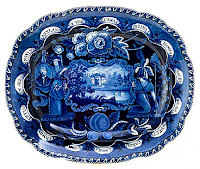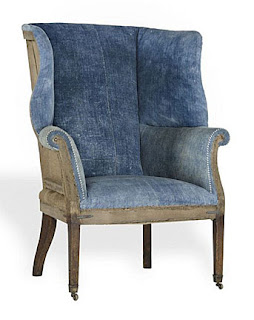 |
QUESTION: Every time I go into an antique mall, I become overwhelmed by all the items. Booth after booth of what seems like junk. Yet I know there must be some interesting and perhaps valuable antiques hidden there. How can I make sense of it all?
ANSWER: Perhaps your mind and senses have gone into antiques and collectibles overload. So many items—bits of furniture, pottery, piles of old jewelry, dolls, old Coca-Cola signs, and things that look like the cat dragged them in. So where’s the good stuff?
It all seems so confusing. And the prices for some items seem ridiculous, especially if you’re a beginning collector. But don’t despair. There’s a method to all that antique madness.
Generally, antiques fall into two categories—those of the real world and those of the rarefied one that most people can only ooh and aah at. And T,V. programs like The Antiques Roadshow, Pickers, and Pawnstars haven’t helped matters. In fact, all of them have brought the world of antiques to a world-wide audience. No longer are antiques in the realm of the rich—the realm of the “Don’t touch that.”
But antiques and collectibles can be broken down into manageable categories.
 When most people think of antiques, they think of furniture. And although furniture makes up a good percentage of antiques out there, smaller items, known as “smalls” in the antiques business—ceramics, glassware, silverware, toys, and commemorative items—all play important roles in the overall history of modern culture.
When most people think of antiques, they think of furniture. And although furniture makes up a good percentage of antiques out there, smaller items, known as “smalls” in the antiques business—ceramics, glassware, silverware, toys, and commemorative items—all play important roles in the overall history of modern culture.
All in all, there are about 15 major categories and 75 sub-categories. Within these there are other, more specialized areas, such as antique musical instruments and automobiliana, two very specialized categories.
Even though antiques can be categorized generally, dealers and serious collectors use historical periods—Jacobean, Colonial, Victorian, Civil War, Western and Retro—to sort things out. Often, these terms also indicate different styles.
 For instance, in the world of furniture, you’ll probably see examples of English, French, and American styles in most antiques shops and malls, as well as at antiques shows or auctions. Most English furniture falls into historical periods such as Jacobean, pre-Victorian, or Victorian while American furniture tends to fall into different types according to region of manufacture—New York, New England, Pennsylvania, or Southern.
For instance, in the world of furniture, you’ll probably see examples of English, French, and American styles in most antiques shops and malls, as well as at antiques shows or auctions. Most English furniture falls into historical periods such as Jacobean, pre-Victorian, or Victorian while American furniture tends to fall into different types according to region of manufacture—New York, New England, Pennsylvania, or Southern.
Porcelain or pottery pieces tend to fall into categories associated with the country in which they were produced—England, Germany, France, United States, China and Japan. The four you’ll see most are English, German, Japanese, and American. You’ll soon become familiar with names such as Royal Doulton, Staffordshire, and Meissen, Blue Willow, Limoge, Belleek and Sevres, especially if you frequent the better antiques shops and shows.
Glassware is the third most popular category. You’ll see all types, including Depression, Venetian, English, and Bohemian glass. Most glassware collectors specialize in a particular produce line–bowls, tumblers, decanters, etc. There’s also a refined category known as art glass in which you’ll find all those pretty vases blown in amberina, peach blow, and ruby.
 Silverware is also a very popular antique. Here again, English, German and American silverware predominates. Like glass, product type defines this category. Collectors actively seek teapots, candlesticks, flatware, and bowls. Classification in this category is by make and markings generally stamped on the back of the products. Sterling and Sheffield silver are the two most recognizable types. EP is often seen as a marking and stands for silver Electro Plate. Sheffield silver is a combination of a layer of silver and copper beaten together to give a silver surface with a warm sheen.
Silverware is also a very popular antique. Here again, English, German and American silverware predominates. Like glass, product type defines this category. Collectors actively seek teapots, candlesticks, flatware, and bowls. Classification in this category is by make and markings generally stamped on the back of the products. Sterling and Sheffield silver are the two most recognizable types. EP is often seen as a marking and stands for silver Electro Plate. Sheffield silver is a combination of a layer of silver and copper beaten together to give a silver surface with a warm sheen.
Next up comes clocks and watches. This is a very popular general category, particularly among men, who seem to like the mechanical nature of timepieces. English, French and Austrian clocks dominate. In the "Longcase," or pendulum grandfather clocks, the English manufacturers stand out with the value of the clock being as much in the beauty of the cabinetry as in the mechanical workings. A beginner should get familiar with clockmakers names such as Thomas Field, McCabe, and Japy Freres. The same applies to watches. Names like Hamilton, Seiko, and Waltham are popular with collectors.
 And finally there are collectibles, which cover everything from blue willow patterned ceramics, which are popular with women, to the war medals popular with men. Just remember what a collectible is. It is an object of limited supply, gathered or accumulated for pleasure or as a hobby. A very trendy category, collectibles nevertheless have basic product lines, such as ceramic plates, perfume bottles, pocket watches, stamps, and even figurines that continue to grow year after year.
And finally there are collectibles, which cover everything from blue willow patterned ceramics, which are popular with women, to the war medals popular with men. Just remember what a collectible is. It is an object of limited supply, gathered or accumulated for pleasure or as a hobby. A very trendy category, collectibles nevertheless have basic product lines, such as ceramic plates, perfume bottles, pocket watches, stamps, and even figurines that continue to grow year after year.
These are just some of the main categories of antiques that you can begin to collect. While some tend to be higher priced, you’ll find plenty of small pieces of furniture, ceramics, and glassware to get you started in collecting.
To read more articles on antiques, please visit the Antiques Articles section of my Web site. And to stay up to the minute on antiques and collectibles, please join the over 30,000 readers by following my free online magazine, #TheAntiquesAlmanac. Learn more about railroad antiques in "All Aboard!" in the 2021 Summer Edition, online now. And to read daily posts about unique objects from the past and their histories, like the #Antiques and More Collection on Facebook.
NEXT WEEK: We’ll take a look at some of the specialty categories of antiques and collectibles.


















































